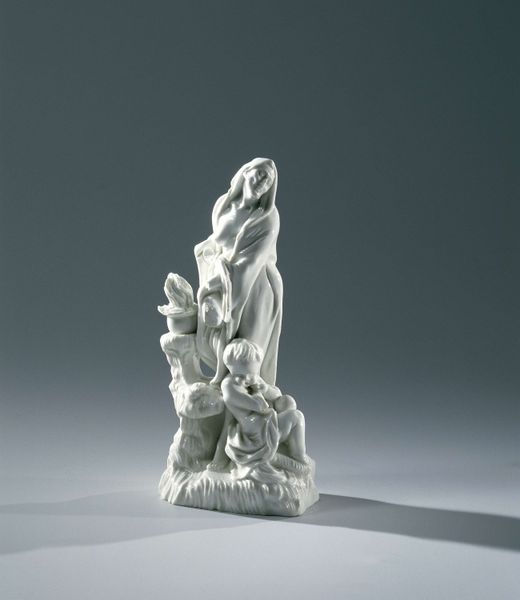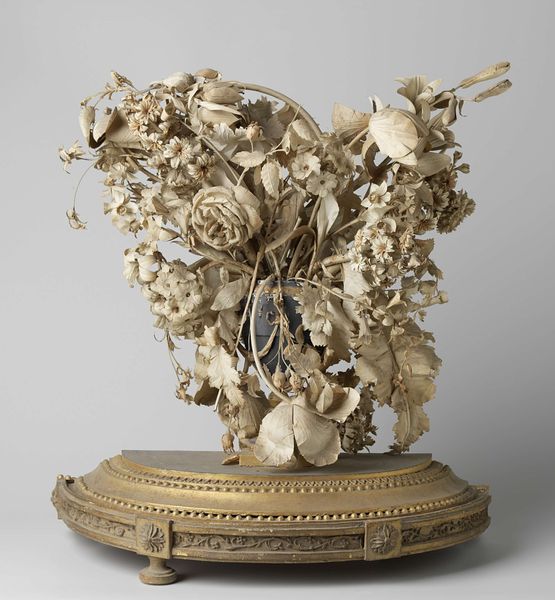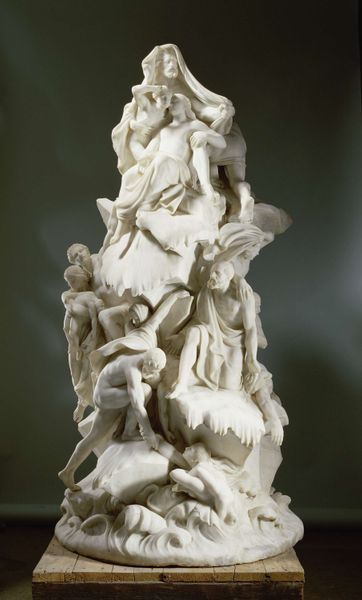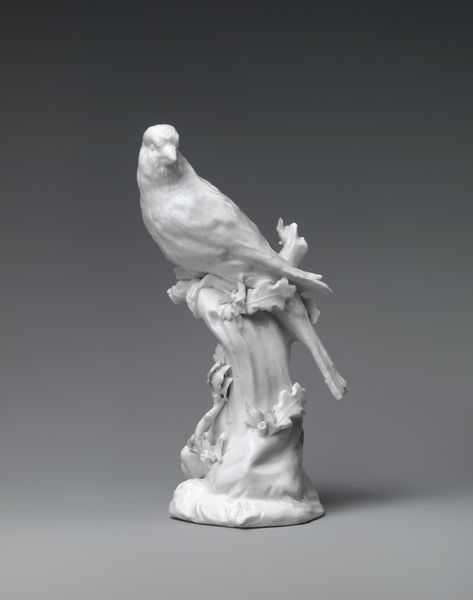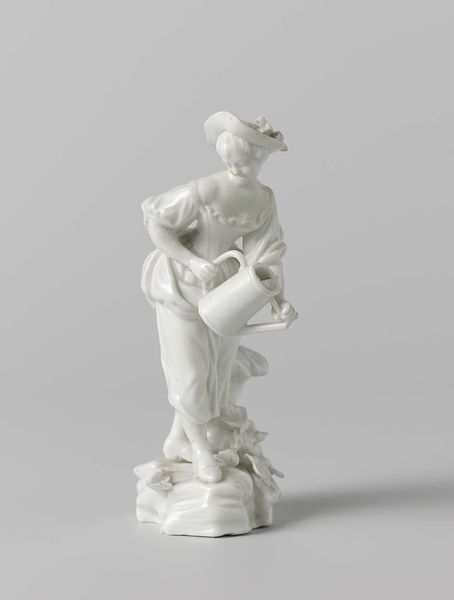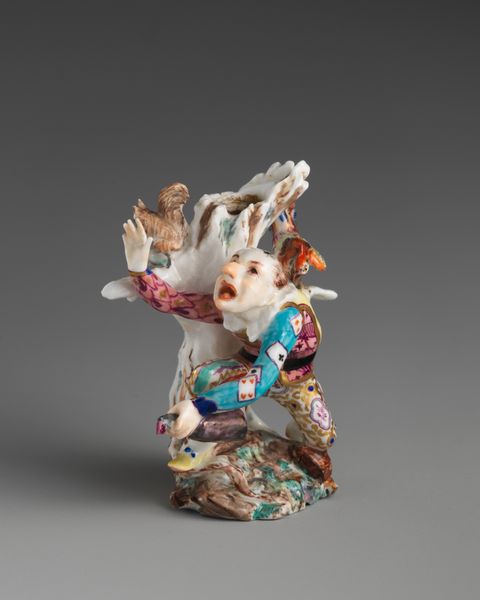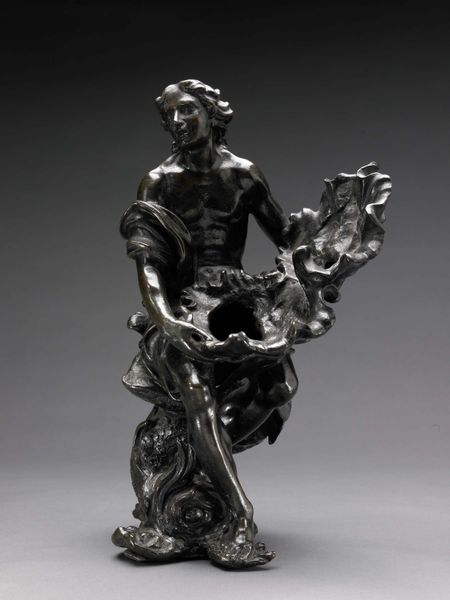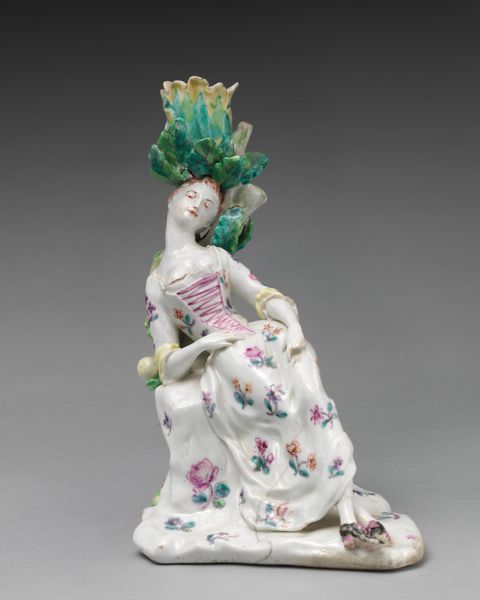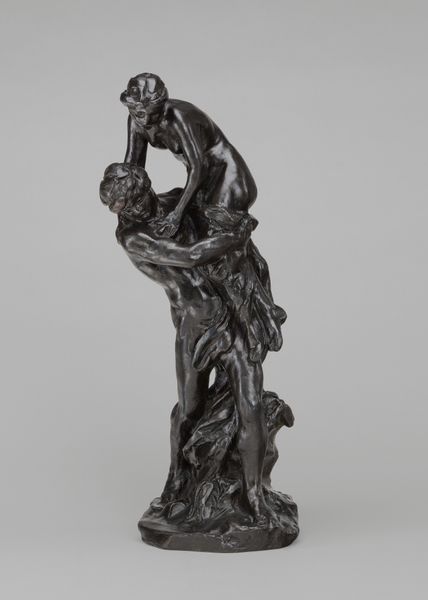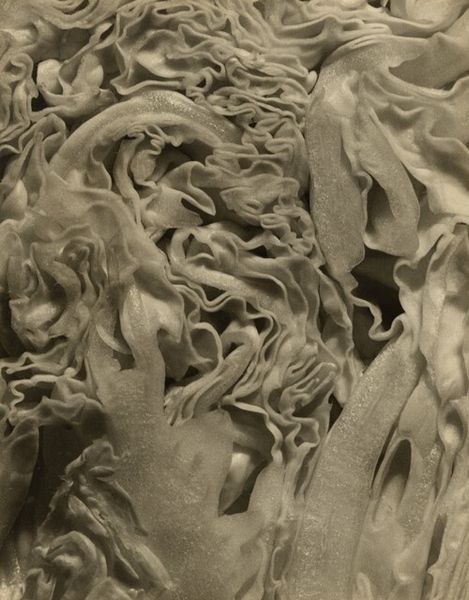
Dimensions: Overall (confirmed): 19 7/8 × 14 1/4 × 15 3/4 in. (50.5 × 36.2 × 40 cm)
Copyright: Public Domain
Curator: Looking at this porcelain sculpture, likely crafted between 1755 and 1770 by the Orléans Manufactory, housed here at the Metropolitan Museum of Art, my mind wanders to how mythology permeates culture. The chosen subject is the Rape of Proserpine. Editor: Rape, yikes. I guess a modern translation might be the Abduction of Proserpine? The all-white rendering does make it a touch ghostly, and theatrical too, don't you think? Curator: Indeed, that ghostly pallor speaks volumes! Symbolically, the whiteness purges color from this myth, amplifying the act's emotional starkness. Observe how this deliberate choice allows our focus to sharpen on the figures’ body language within the composition itself. The scene unfolds dramatically, mirroring the Baroque sensibilities prevalent at the time. Editor: It definitely leans into that ornate style. Those rearing horses, frozen mid-leap, they add to the frenzy. But the grouping together on the small base gives me an unnerving feeling, as though I am looking at something too still, which kind of increases the violence depicted. It makes it more... contained. Curator: Precisely. That visual restraint intensifies the drama, speaking to Baroque fascination with both control and explosive emotion. The Rape of Proserpine wasn’t merely entertainment, though. Its underlying message explores human connection to the terrestrial and supernatural world, linking mortal fates to those determined by divine forces. Editor: It's interesting how such charged narratives find their place in what could easily become ornamental art. It seems a daring venture back then, using refined materials like porcelain to echo raw, unfiltered stories about power. I think it tells us much about ourselves. What are we capable of, in light, and darkness? Curator: A potent observation! When one considers the complex history of symbolic depictions in this artwork, perhaps the greatest realization of all comes down to how its lasting impressions reside more deeply than merely the scene presented here. The porcelain Rape of Proserpine continues challenging preconceived ideas embedded deep within. Editor: Well, I'll never look at a porcelain figure the same way again! Makes me consider what symbols of our era will survive and confound audiences centuries from now.
Comments
No comments
Be the first to comment and join the conversation on the ultimate creative platform.

